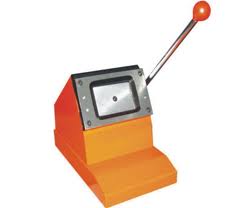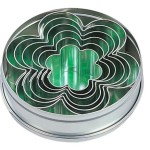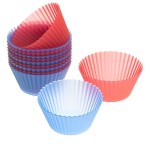[toc]For 150 years in many industries, the only way to mass produce, standardize, and make more accurate cuttings is to use dies. What does this have to do with scrapbooking and crafting? Well, everything!
A lot of crafters and designers have dealt with die cutting process. This is mainly because manual cuttings take too much time and accuracy is also a problem, especially if shapes are very intricate. Personal die cutting machines have been produced to help crafters speed up and make more out of their designs by using die cutting. Read along this article as we try to explain what simple die cutting is all about and how you can benefit from it.
What is Die Cutting?
 Die Cutting is the process of literally cutting out shapes on different materials using a hard press. In crafting, they are used in papers, vinyl, fabrics, and in some cases sheet metal.
Die Cutting is the process of literally cutting out shapes on different materials using a hard press. In crafting, they are used in papers, vinyl, fabrics, and in some cases sheet metal.
Die Cutting was introduced more than a century ago in the shoe industry. It’s like this, try to imagine creating your own shoes. Then try to imagine making more for different designs of the same size, or mass producing one variety for like 10 people. Hard isn’t? Very! Creating rubber sandals with manual punchers alone is laborious! Shoe makers in the past cut out parts for the shoe by hand. So, they used a pattern that is shaped like the sole of shoe and hit it with a mallet. It then instantly cut outs the leather.
It is in the same principle that many industries use that same concept. It is used to produce a large number of quantities of one particular shape. That shape can be a part of a vehicle or an actual product that will be finished before sold.
We already have been using this concept, probably since grade school. Remember those good old punchers? Well they are still widely being used in many school and office, right? That is a very simple example of a hand held die cutter. But its main purpose is to cut out wholes so that fasteners will fit to clasp filed papers.
For crafters, punchers come in different shapes and sizes. These shapes are usually sharp blades that are able to cleanly cut off papers, or thicker materials like cardstocks. How many punchers do you have in your craft area?
What is a Die?
 A die is a specialized tool to cut a certain shape on a material using a press or punching tool. It usually is made out of metal. It can then form materials like paper, metal, and plastic into the same shape it is designed for. The sharp blades I mentioned above are actually dies.
A die is a specialized tool to cut a certain shape on a material using a press or punching tool. It usually is made out of metal. It can then form materials like paper, metal, and plastic into the same shape it is designed for. The sharp blades I mentioned above are actually dies.
To make things easier, think of a cookie cutter. The cookie cutter is a good example of a type of die wherein it cut outs the dough so that the dough will have a proper shape before you bake it. And you can use that same cookie cutter to make the same shape over and over. You will then produce cookies with uniform shape and size. Convenient, right?
Difference between Molds and Dies
 Like molds, dies are generally customized to the item they are used to create. But there is a huge difference between a mold and a die.
Like molds, dies are generally customized to the item they are used to create. But there is a huge difference between a mold and a die.
A mold is a shape or pattern where it holds a molten or liquefied substance until that substance harden and takes the shape of the mold. It is not necessarily made of metal. This depends on the applications. Take a cupcake mold for example, a lot of bake wares are made from silicone. And unlike a die, it is not sharp enough to cut anything.
A die on the other hand, makes a particular shape on solid materials by being pressed.
Difference between Templates and Dies
“A die can serve as a template, but a template cannot always serve as a die.”
Dies have particular shapes or pattern and thus can be treated as templates. But their main purpose is again to cut out a shape or pattern onto a material which is what templates cannot always do.
If you thought of a shoemaker using mallets to cut a shape of a sole, you can consider that as a template. But templates come in different forms and applications. They can be used as patterns for manual cutting, for overlays, for stencils, you get the picture? They serve mainly as guide but they do not always cut.
What is a Die Cut?
 When you cut out a shape using a die, that particular shape is a die cut. It is also called a blank (specifically in industries) because it will later be finished. In making cookies, the cut out cookie dough is a die cut. The picture of a heart puncher on the left, the pink hearts you see are also die cuts.
When you cut out a shape using a die, that particular shape is a die cut. It is also called a blank (specifically in industries) because it will later be finished. In making cookies, the cut out cookie dough is a die cut. The picture of a heart puncher on the left, the pink hearts you see are also die cuts.
In scrapbooking and crafting, this is our main target why we essentially use die cutting process. We use die cuts for embellishments. They can be shapes or letters from cardstocks or specialty paper. They are usually pieced together or decorated.
Die Cutting Machines
Like I mentioned above, hand-held die cutters are already available such as punchers. They come in different shapes and sizes. But the main disadvantage of owning these tools can be costly and spacious for your craft area. So different companies revolutionized die cutting by producing personal die cut machines that can sit on your desktop.
Die cut machines are designed to simplify die cutting processes. They are also made with extensive features that will cut different types of materials and different thickness. But the different thing about these machines is that they do not use one specific shape as a die cutter, they use thin sharp blades that can be adjusted based on materials.
But many die cut machines nowadays have different functions as well. This is something that users would have to thoroughly think about when purchasing one. You have to check how they are used and what else do they need to purchase and use along with it. Most of them require computers to really maximize their machines.
Die Cut Machines or Electronic Cutters connect to a computer mainly because die cut shapes are images seen on softwares or cartridges that come with the machine. These machines are the modernized die cutter versions because these machines are able to cut an array of shapes, fonts, and detailed patterns displayed on computer screens, and then are cut by a single blade.
Advantages of Die Cutting
- Speed – It is way faster and easier to cut shapes using die cutting than manual cutting. Because die cut machines usually can do the job in seconds. Even hand-held punchers can cut in only one press. Compared to manual cutting, it will take long hours just to make intricate details.
- Accuracy – Die cutting will be able to cut shapes with precision that manual cutting cannot. They are more stable and have less vibration than any human hand.
- Uniformity – With die cutting, you will be able to create identical shapes over and over again like the cookie cutter principle. This is good for repeated projects or products such as invitations and greeting cards.
- Efficient – Even if you can do manual cutting, it will still be tedious to cut out shapes over and over again, right? With a die cutter, you can do more cuttings for multiple projects at a time especially for those thicker materials. It will not wear down easily unlike a human.
- Cheaper – As I mentioned earlier, owning many hand-held tools like punchers can be quite expensive. Investing in a machine can save you big bucks. It can cut out a lot of shapes than any other die cutters.
- Portable – When you invest in a machine, you have to check if it is moveable. You have to consider if it takes too much space as it is another addition to your horde of gadgets, or that it can be sit side by side your computer. It is important to take note too if a machine can be brought to any place sufficient for cutting huge materials such as a banner.
- Less Scrap – When you manual cut a paper, you usually have to cut a side of a shape before you get around it, right? With die cutting, that will not happen because it will simply punch a hole on the material. You can even create intricate designs that will no normal manual cutting could do. The best thing about die cutting is that even the remainder of the die cut can be reused on different projects. Plus, die cut machines now are able to cut in as little as a quarter of an inch, saving you tons of materials left for next projects.
Tagged with die cutter, die cutting, electronic cutting machine, scrapbook business, scrapbooking materials, scrapbooking templates, scrapbooking tips






